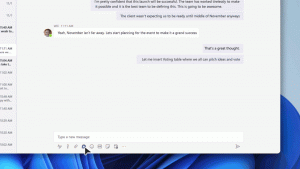Microsoft is aiming to solve a long-irritating problem that seemed to become more irksome as people began working remotely during the pandemic: Hunting through hard drives and cloud drives for the correct files – and gathering all of that information in one place where teams can work on them together.
During its Ignite technology conference on Tuesday, the company introduced Microsoft Loop, a new component of its Microsoft 365 suite of productivity apps. Loop allows users and teams to collect everything needed for a project – files, links and data from other apps – into a single workspace, then provide a bird’s eye view of everything happening with a project.
Microsoft also announced an AI-driven feature of Office 365 called Context IQ. It uses the Microsoft Graph – which tracks connections among files, apps and people – to observe what people are working on throughout the day, then predict and suggest what information they need.

